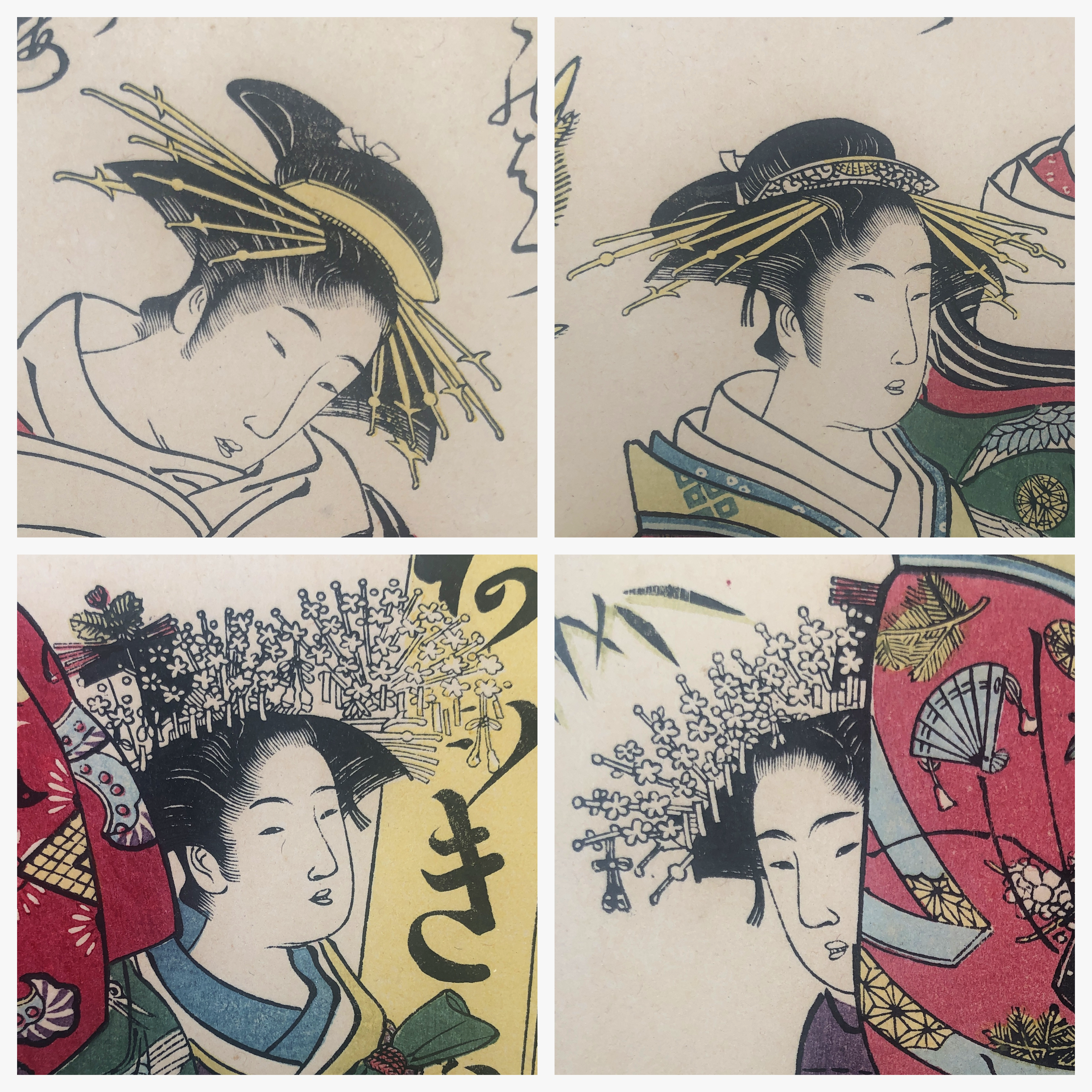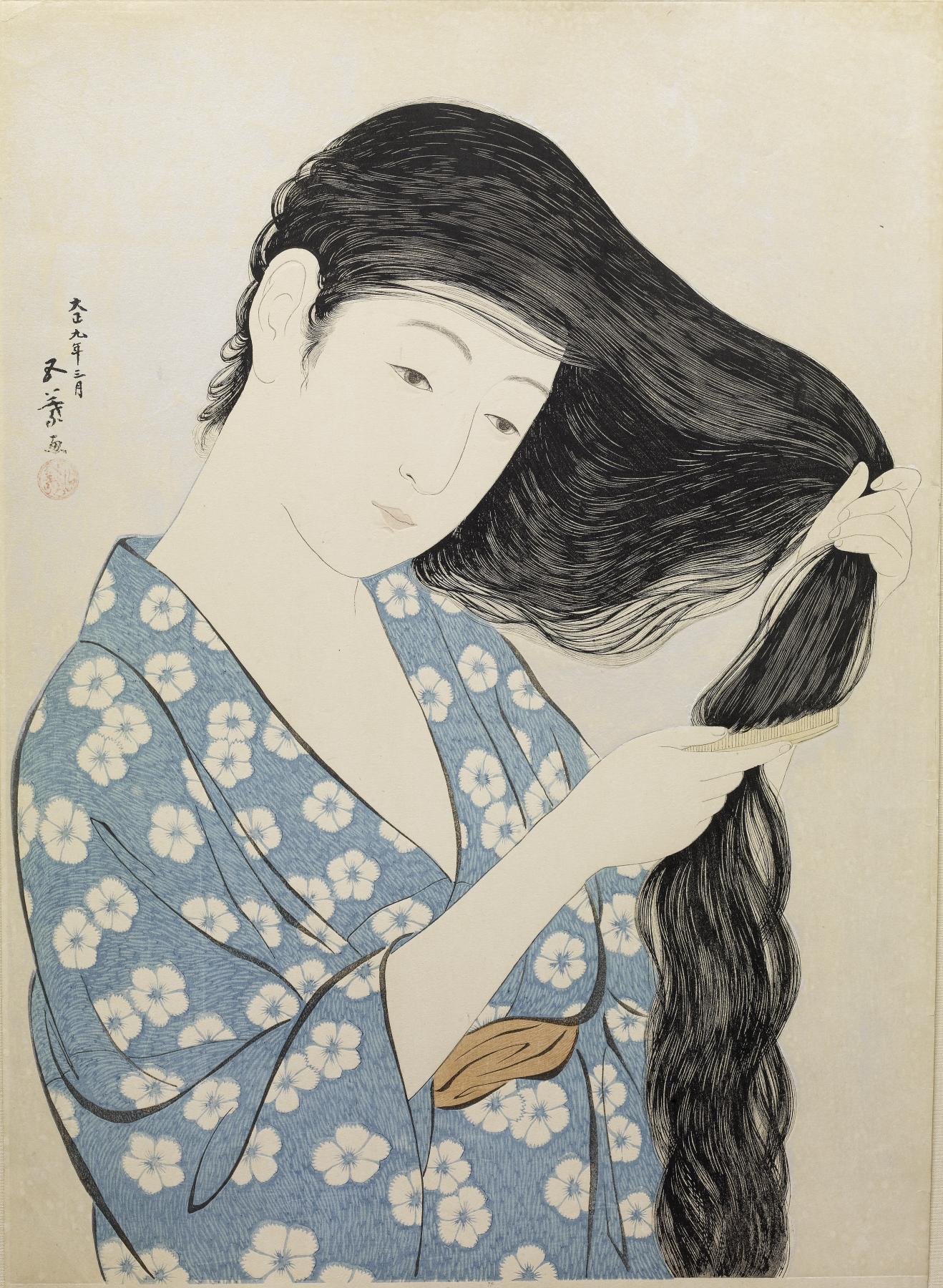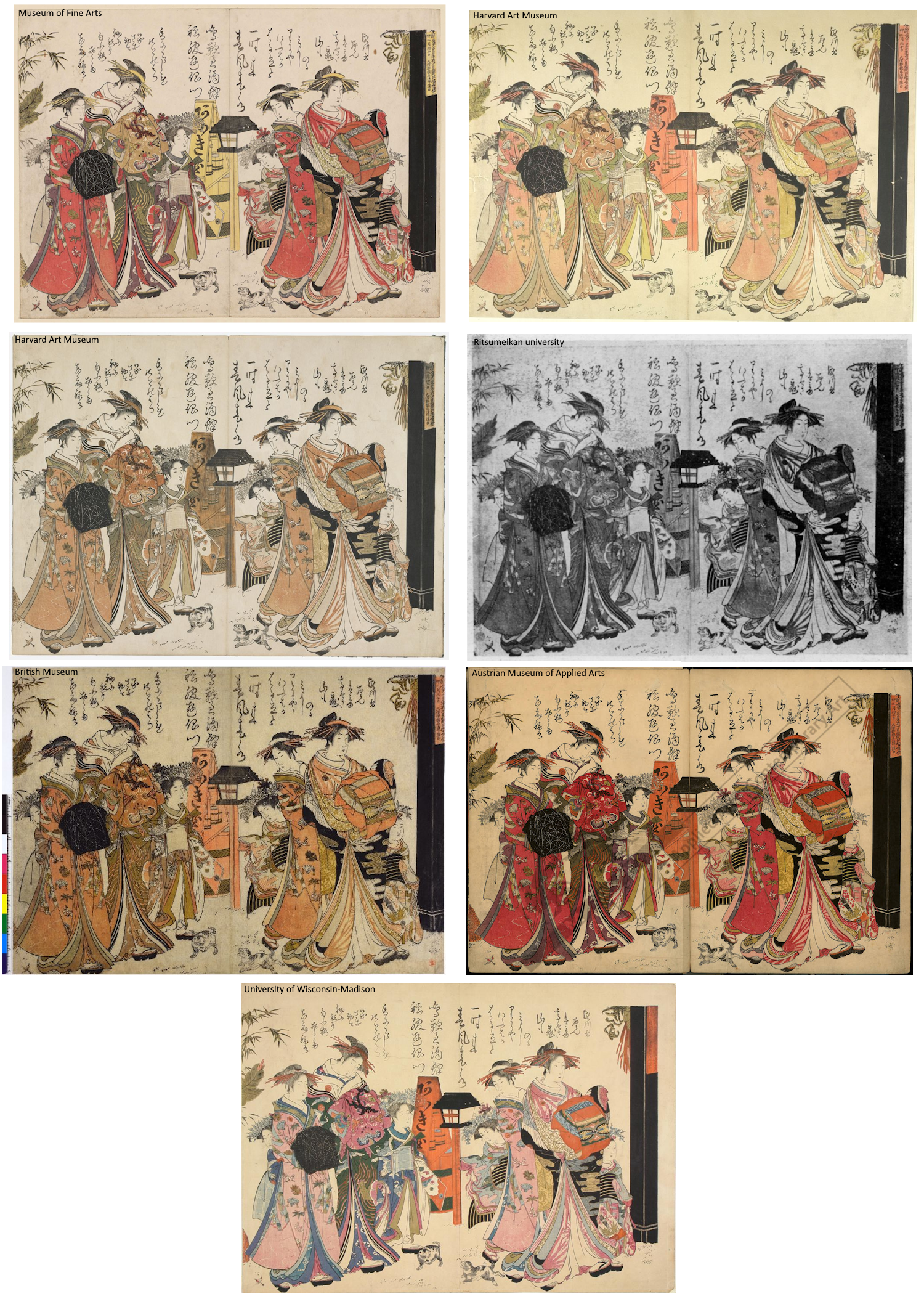York, New Beauties & Cats
After my first post about ukiyo-e in my very small collection, it seems I’m starting a trend and writing about another item. This item was the first I ever acquired, and as such, it is located close to my heart.
The Print
| Details | |
|---|---|
| Title | A Competition Among the New Beauties of the Yoshiwara Mirrored in Their Writing |
| Artist | Kitao Masanobu (Santō Kyōden) (1761 – 1816) |
| First Publication Date | 1783-84 |
| Reprint Artist | Goyō Hashiguchi (1880 – 1921) |
| Reprint Series | Japanese Colour Prints in Ukiyo Style |
| Reprint Volume | 2 |
| Reprint Publication Date | 1917-1918 |
| Purchase Date | 05 May 2022 |

I attended the University of York, UK and graduated from my programme during COVID-19. In fact, on the 30th Jabuary 2020, I woke up to the news that I lived directly opposite the first confirmed cases in the UK. leaving my graduation ceremony postponed until the virus was less prevelant.
Anyway, my time at York was fantastic, and my delayed graduation ceremony was a much anticipated day for me; having already completed a Masters degree and started working in industry since official graduation. I had two graduations that year, so one parent came to each to distrubute the finances of hawling people around the country on overly costly and busy trains. For York, it was my father’s turn, most likely due to the fact he adores the city.
As a graduation gift, my father suggested taking a look in York’s Japanese Print Shop before leaving the city. It’s been to the shop half a dozen times while studying in York, and was very happy about the suggestion. It’s an small shop which is strangely placed, being an outpost of Japanese woodblock prints above outside of the South of England. I can recommend it if you’re in York and are woddblock print inclined.
After much deliberation, and with a train departing within the hour, I eventually landed on the print shown at the top of the blog. It was a little over budget, so the cost was shared between my father and I, but I felt so drawn to it, I could not resist.
I think my eyes were first drawn in by the vibrant colours; intricate designs; and great print impressions of the courtesans’ kimono:

The choice of colours doesn’t feel like artifical dyes, although I do not know if they are or not. I’m mainly trying to convey that the kimono feel exciting and energising, but without the punchy or aggressive appearence of harsh artificial dyes. The designs scream wealth, as do the headdresses and postures of the subjects. The cheakily peeping girl from behind one of the kimono is also a great addition to the composition in my opinion. She brings real character!
Speaking of portraits and headdresses, here is the full set:

I am infatuated by both the detail of the carving skill shown along the women’s hairlines, which was most likely carved in to cherry wood; but also by the extravagant hair ornaments, known in Japanese (i think…) as Kanzashi (簪). Every single one of these faces just screams glamour to me.
The cherry on top is the mischievous creature hiding from the limelight in the corner of the print:

With the print decided, the purchase was made and I transported the print back home over the next four hours, preppared to find out every detail about it.
My First Foray Into Woodblock Print Research
So, I had acquired my first print after years of interest in woodblock prints. Now I wanted to know everything.
The first information was easy enough to find… it was sold to me with the print. The title, original artist, and reprint artist were all known. The latter two are:
Kitao Masanobu (Santō Kyōden) (北尾 政演, 1761–1816)
The original artist of the print, Kyōden was an Edo period (1603-1868) artist, writer and tabacco shop owner. His works of ukiyo-e seemed reasonably popular from what I could tell, but he perhaps had more success in his writing career. This could have been due to the Kansei Reforms which banned many publications that related in any way to Tokyo red light districts, such as this print.
Goyō Hashiguchi (橋口五葉, 1880-1921)
Goyō is best known for his own work in the shin-hanga movement of woddblock printing, including the work below. The movement took place in the early 20th century and focussed on revitalising traditional practices within woodblock print making; including division of labour between artists, carvers, printers and publishers. Goyō’s contribution to my print was that of creating the Edo period reprint.

The Unknowns, Unravelled
The main questions I wanted to know were:
- What was the publisher seal, see in the bottom right of the print at the top of this blog.
- Was this print part of a series? Japanese prints often are.
- Are there other copies of my print out there?
Why did I have some of these question? Well, a first port of call for ukiyo-e research is Ukiyo-e Search. Through that site I was able to find these matching copies from various museum collections around the world:

Here we can see that I actually own half of a double page spread, and none of these prints have the same publisher seal as my print. For reference, the publisher seal in question is:

The size of the print is also somewhere between A5 and A4. This is could indicate that it is a page taken from a book, containing a series of prints.
In the end, the questions were answered by a kind stranger on the internet, via a Facebook group dedicated to ukiyo-e discussion. This strange claimed to have prints from the same book that my print had come from. He gave me the following information:
- Republished Series Title: Japanese Colour Prints in Ukiyo Style (浮世風俗やまと錦繪)
- Reprint Publisher Name: Association for The Publication of Pictures of Japanese Scenery (日本風俗図絵刊行会)
This was fantastic information, and allowed me to track down the exact print in Japan’s Nation Diet Library. On page 24 of this link, the following could be found:

At last! My exact version, seal and all. That puts the reprint at 1917-1918, in the second volume of the series. There don’t seem to be any other copies of my exact printing out there that I could find, which is a surprise, but not one I’m going to dwell on.
The Text
The very final question I wanted to answer was what the text in the printing said. For this I enlisted both strangers on Reddit, and my japanese tutor’s assistance. The cleaned up text is below:

Apparently the text is split in to two sections. The right hand side was translated by a chinese speaking stranger online, who identified it as a verse of a chinese poem, 長安道 (Road of Chang’an):
鳴鞭過酒肆 袨服遊倡門
By whipping a horse and passing a tavern, gorgeous clothing play in the gate of the brothel.
The second part was identified by another stranger, this time Japanese speaking. Despite the text being in kuzushiji (old, cursive Japanese which is almost impossible to read), they managed to track down an academic text which transcribed the print’s text, and then translated it to English themselves. The text can be found here, and the transcription and translation are:
香にはしれ けさのはつ花 さき初て 袖に袪に 匂ふ梅そも
As is evident from the fragrance, this morning the first blossom is beginning to bloom, and the plum scent is all over my sleeves.
Finally, from the same paper, we have an attribution for the text:
花扇詠書
Poem and calligraphy by Hanaōgi
It’s truly incredible the knowledge that can be shared over the internet!